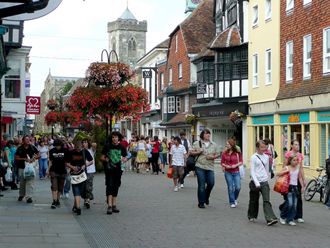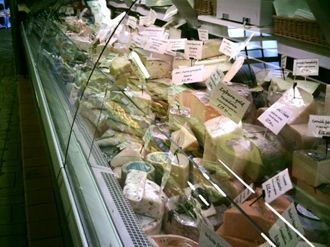 Expensive celebrity fueled adverts have lost their magic with Marks and Spencer reporting a fall in clothing sales.
Expensive celebrity fueled adverts have lost their magic with Marks and Spencer reporting a fall in clothing sales.
The company has struggled with its clothing sales over the past few year.
However, it enjoyed a brief success after a range of initiatives. This included
hiring celebrities such as Myleene Klass, Dannii Minogue, Lulu and Gary Barlow to promote the brand, as well as targeting younger consumers.
Despite its latest figures rising slightly in the first three months of 2013, the company pointed out that the profit was gained through its food business, which offset a fall in clothing sales.
UK food sales hit a four percent growth compared to the same time last year, however clothing and merchandising was down by 3.8 percent.
M&S chief executive Mark Bolland said the company was “working hard” to improve its performance on general merchandise, blaming “difficult trading conditions.”
The company said its food division had been outstanding, with Easter food sales their best ever. The figures matched recent research by the British Retail Consortium, which in its latest highstreet tracker said Easter sales had helped revenue rise.
And it isn’t isolated in failing to make a profit on clothing with the highstreet in general suffering as a result of prolonged bad weather and the economic climate.
According to Clive Longbottom an analyst at Quocirca, there are a few things the chain could do to improve its flagging fashion figures.
“I think that M&S has started to slide back to the things it was doing wrong before,” he said. “It has a massive range of clothes, far too many for the sort of clientele it has”.
“Therefore, it has to carry a lot of inventory, and I expect that a lot of this has to be disposed of through sales or through cutting the labels out and selling off to others at cost or below,” Longbottom said.
He gave an example of a personal trip to a store , which he said was “laid out badly”.
“We were there to find a dress for my mother-in-law, a woman in her late 80s. If she had been with us, I doubt that M&S would have made a sale at all, the clothing was laid out in completely different areas with no commonality or means of identifying where we should go,” he said.
“Better structure to how M&S lays out its goods may well help in ensuring that its mainstay audience can shop by category, rather than having different “makes” of clothing bunched together when all of them are M&S anyway.”
However, he praised the company’s underwear department, which he said kept everything in in one place and it is easy to compare and contrast and said Marks and Spencer should extend this to other parts of its store.
“Try to compare and contrast a skirt and blouse – you’ll need to pick things up and carry them around the whole store so that the three that you want to compare and contrast are in the same place at the same time – and then you have to dump the two that you don’t want, as it will be impossible to remember where they came from in the first place – so causing cost for staff to put things back where they came from,” he said.
“I’d advise cutting back on the number of styles M&S stocks; grouping by type of clothing, like skirts, dresses, blouses, etc, and having more staff on the floor to provide sales help to shoppers. On the whole, the M&S people we saw were generally behind the sales desks.”
 The UK Office of National Statistics (ONS) said that sales in shops rose by 5.3 percent in December 2013 compared to the same period in 2012.
The UK Office of National Statistics (ONS) said that sales in shops rose by 5.3 percent in December 2013 compared to the same period in 2012.






